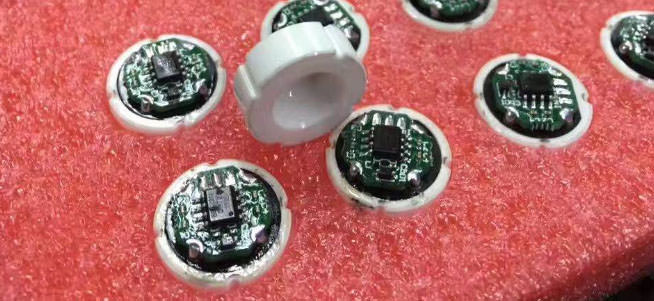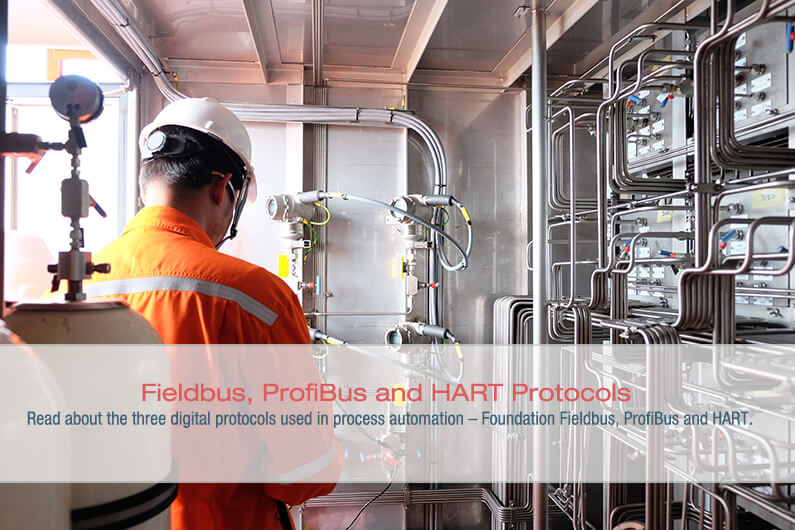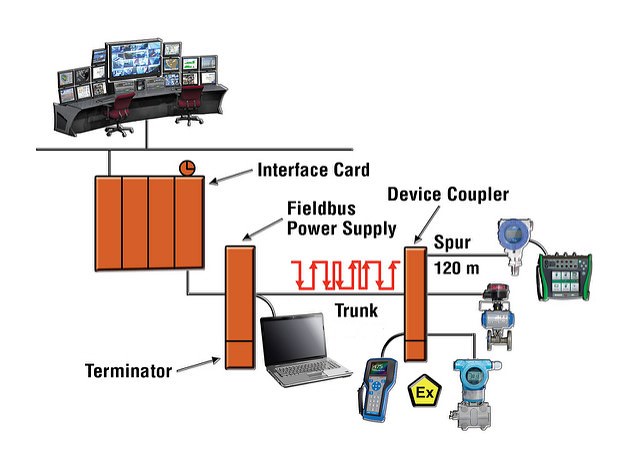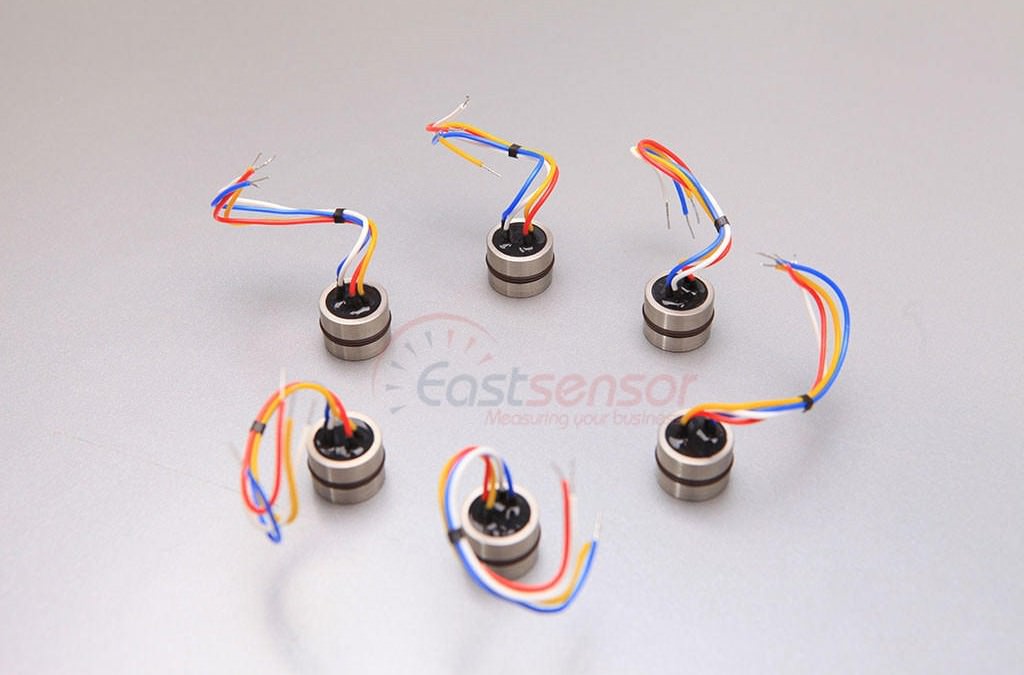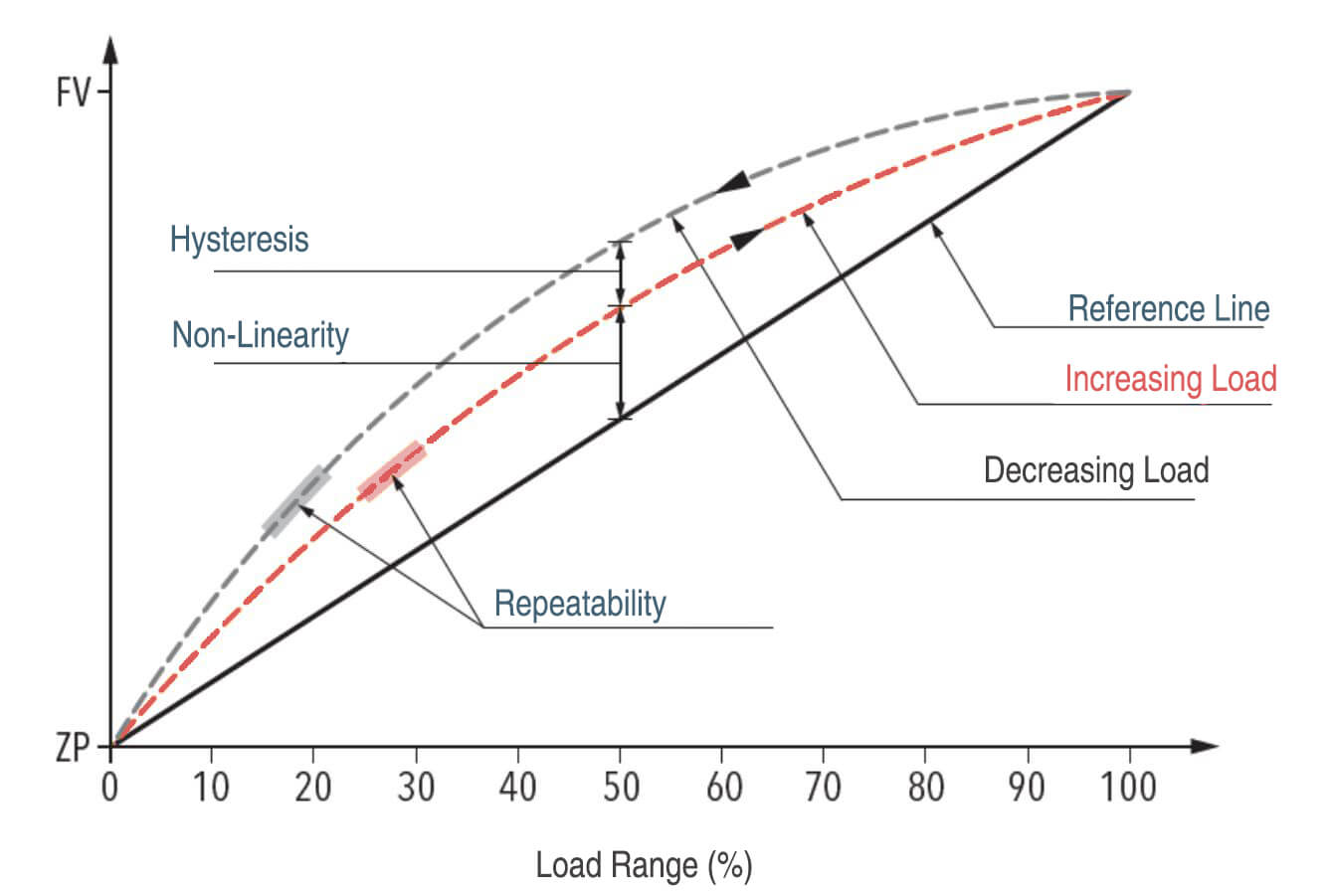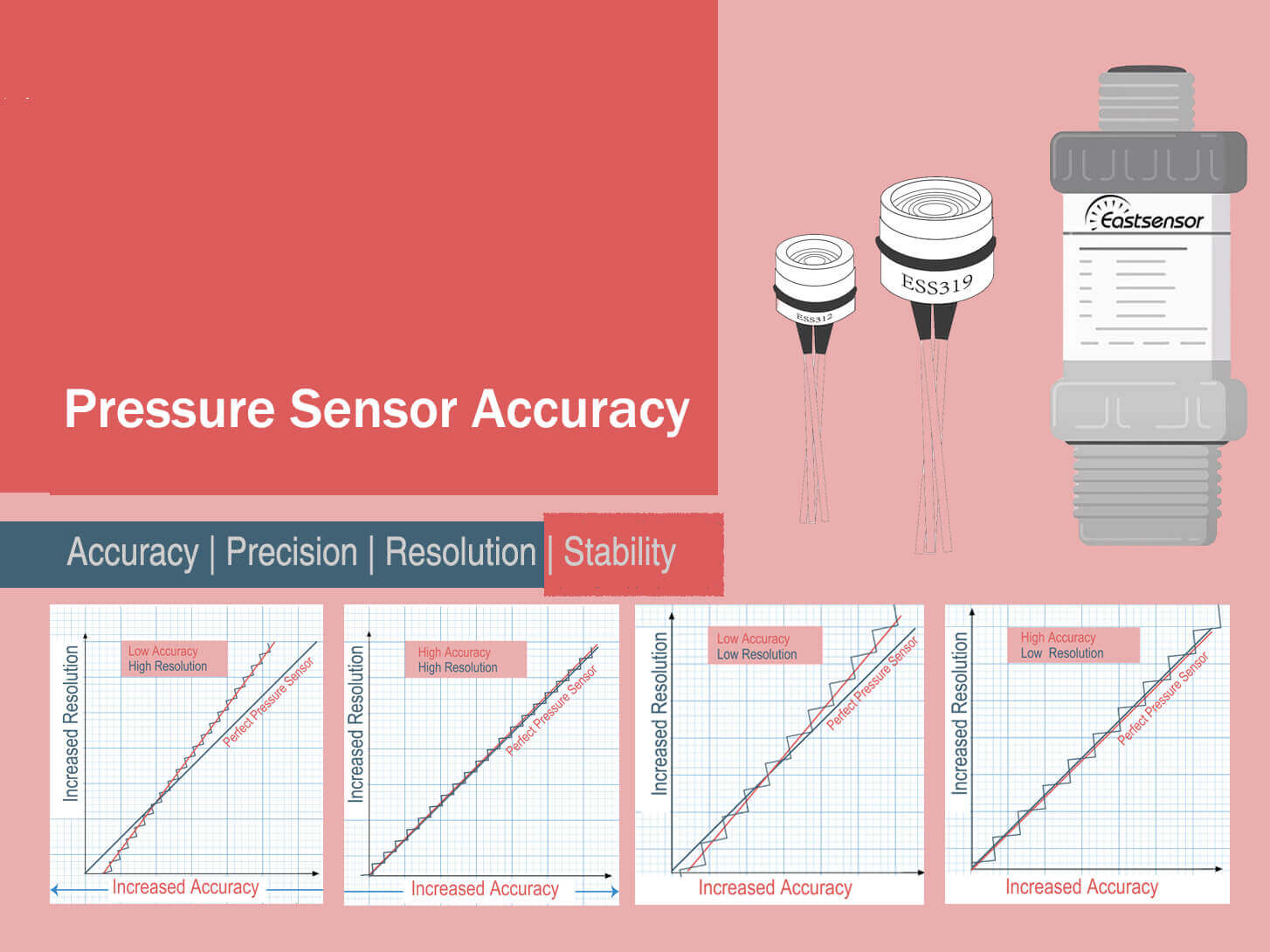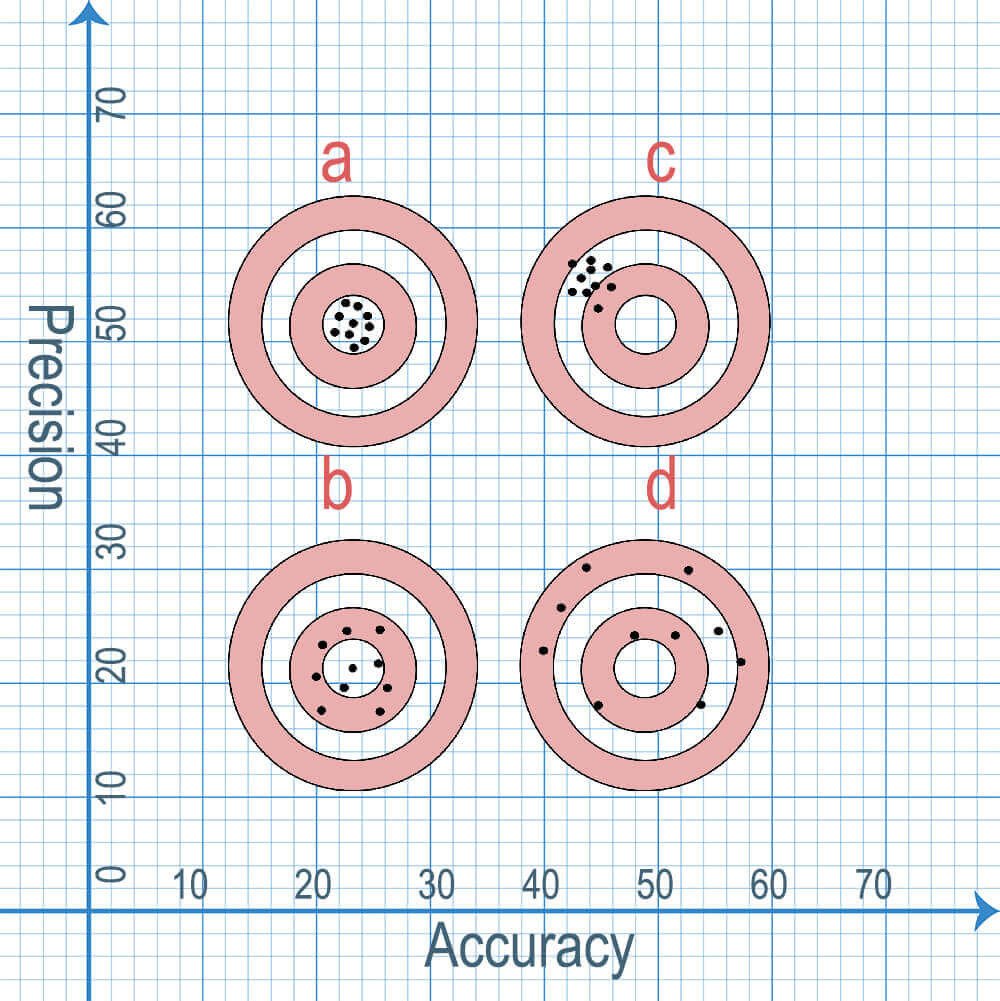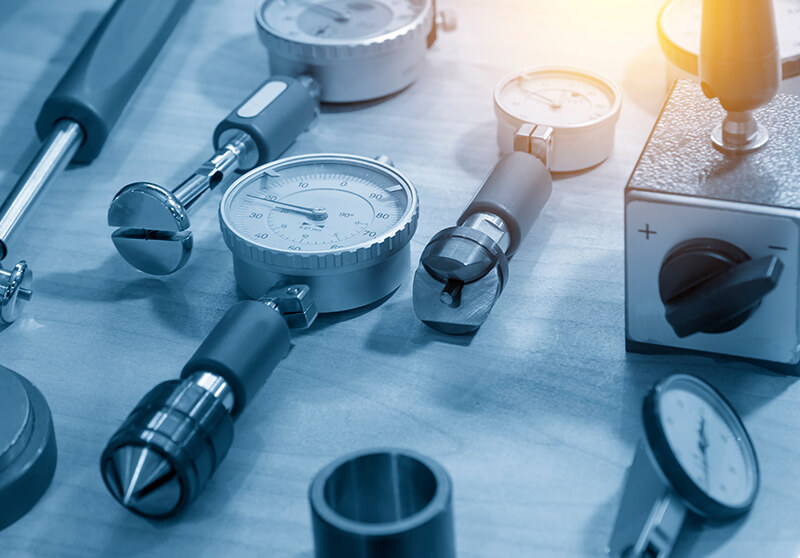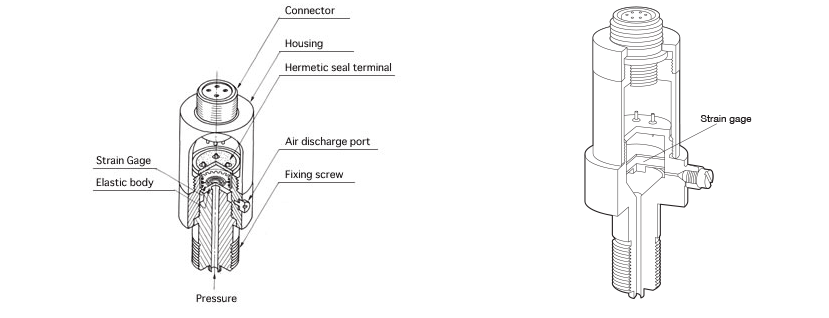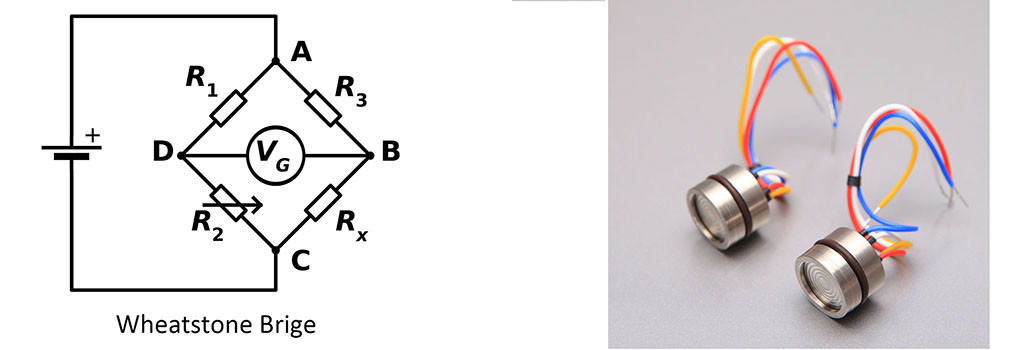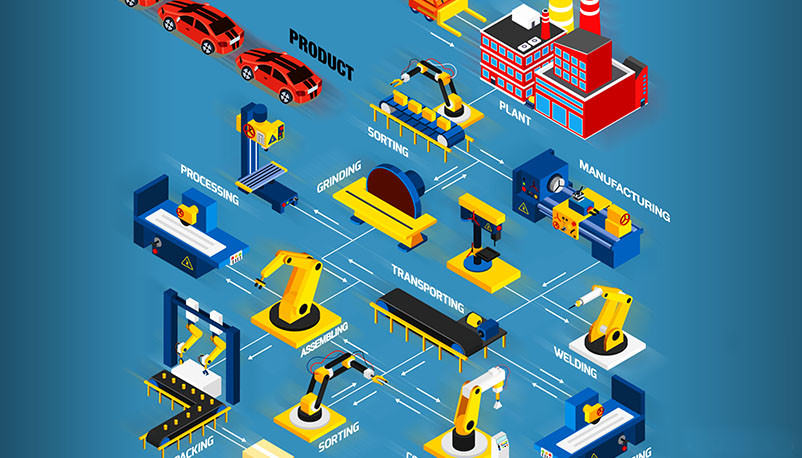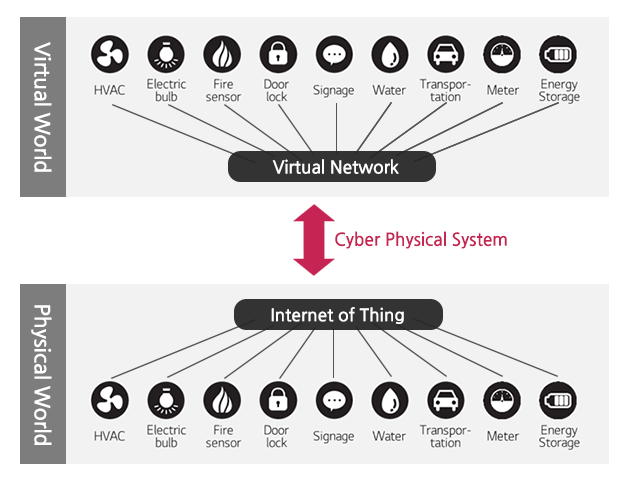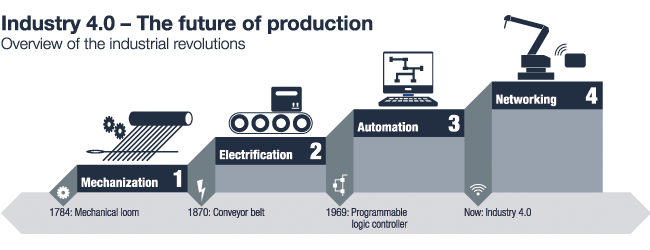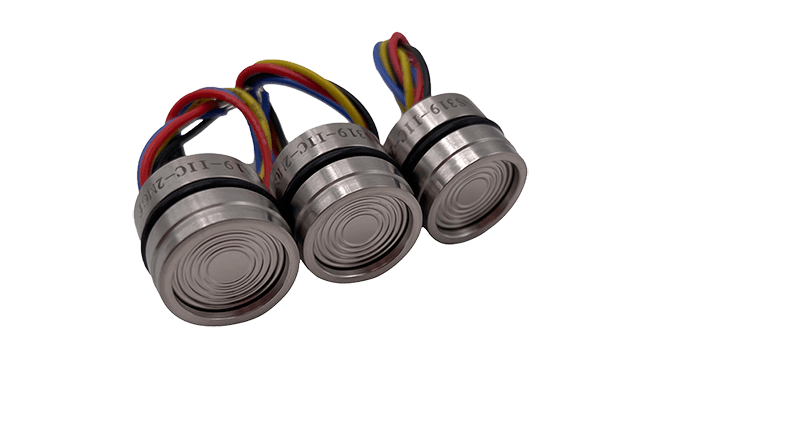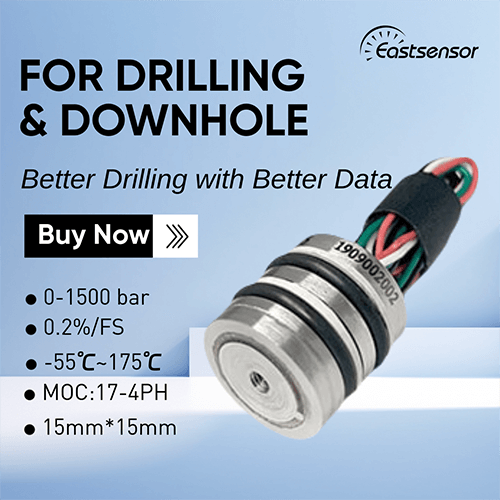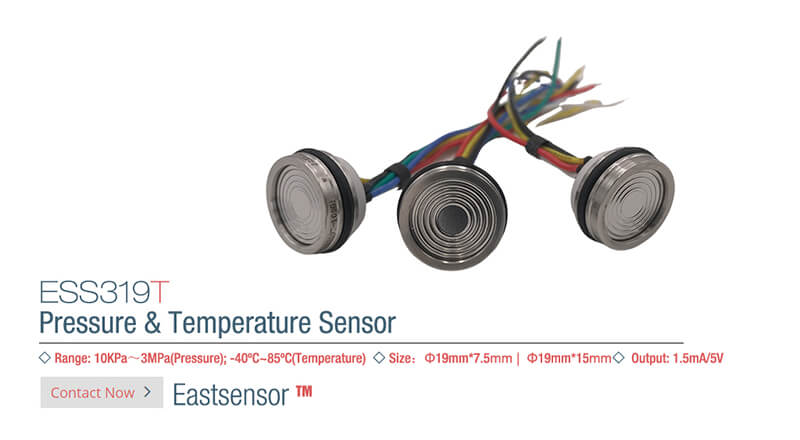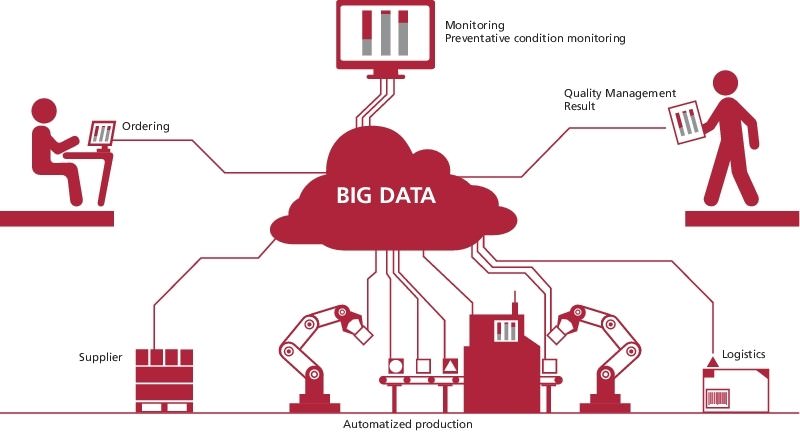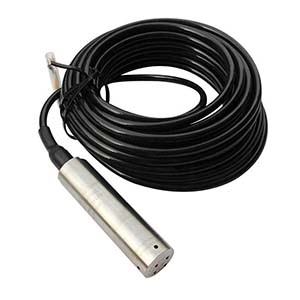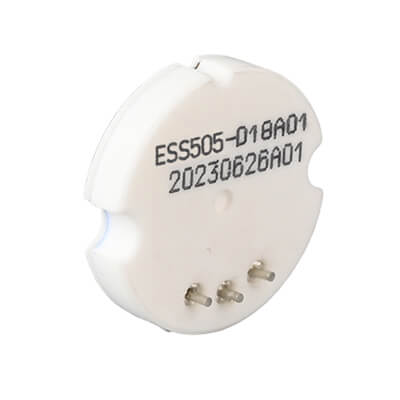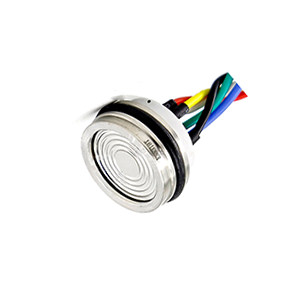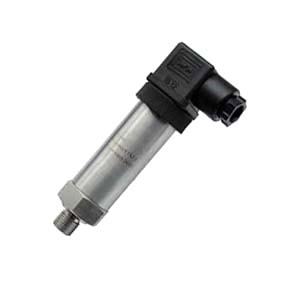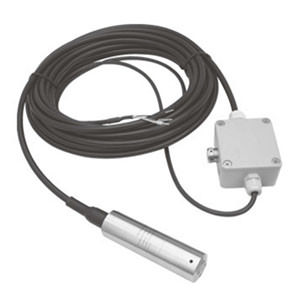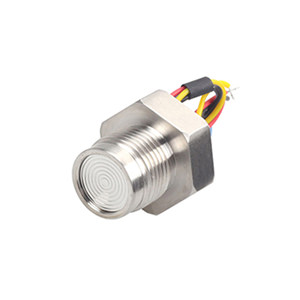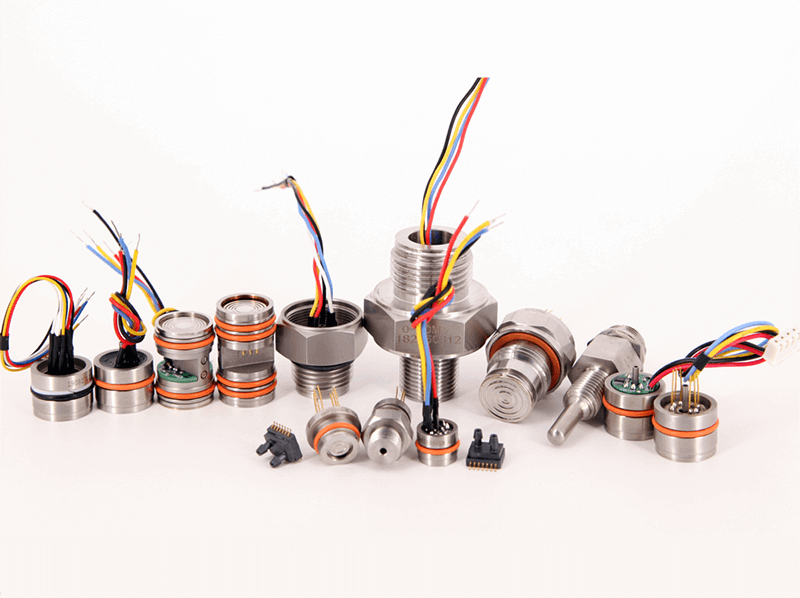
5 Pressure Sensor Working Principles You Need to Know
With an expanding pressure sensor market as well as an increase in applications for the technology, you are bound to deal with kinds of different pressure sensors. Whether you are fresh to the advancement or have dealt with pressure sensors for numerous years, how certain are you with a few of the modern technologies as well as principle associated with pressure sensor choice?
Today, I will ideally cover the majority of the terms and also questions you might have about pressure sensor. And also, I will certainly provide the easy contrast in between the similar terms, get the verdict of pros and also cos for every principle, so you will throughout our goal to choose the very best suitable pressure sensor for your application.
Pressure sensor working principle
An pressure sensor trusts a physical action to applied pressure, and then gauging the resulting proportional modification in an electronic format. Such digital format commonly includes
- Adjustments in capacitance
- Changes in ohmic resistance of a strain gauge
- Piezoelectric element, which are all proportional to the size of the deflection when pressure is used
Strain Gauge Pressure Sensor
In a strain gauge type pressure silicon, sensing unit or foil strain gauges are organized as a Wheatstone bridge. The resulting signal is after that boosted as well as conditioned to provide an appropriate transducer-voltage or transmitter-current output agent of the employed pressure.
There are many types of strain gauge, usually can be summarized as below varieties:
- Fine wire strain gauge (also called Metallic wire-type strain gauge)
- Metal foil strain gauge
- Thin-film strain gauge (also called metal thin film strain gauge)
- Semi-conductor strain gauge (also called solid state)
- Diffused silicon semi-conductor strain gauge (also called Diffused Silicon Piezo-resistance)
- Thin-film semi-conductor strain gauge
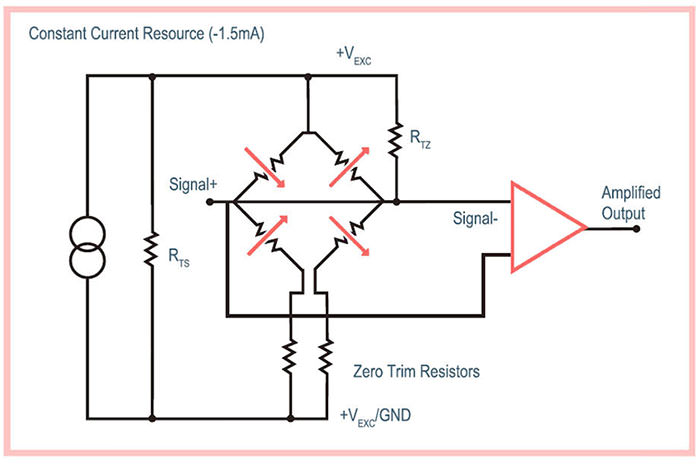
No matter it is mechanical strain gauge or capacitance and inductance-based stain gauge, they are working properly via Wheatstone Bridge which constructed on substrate using below techniques:
- Bonding
- Pasting
- Coating
- Printing
- Sputtering (Vacuum deposited)
- Photolithography each etching
- Chemical sediment
Advantage of Strain Gauge Pressure Sensor
- Can be employed to measure both static and dynamic strain
- Medium or small size with light weight
- Relative low cost, variety, easy to choose and use
Disadvantage of Strain Gauge Pressure Sensor
- Can not measure low pressure than 1000pa
- Accuracy is not as high as required (normally 1%)
- Temperature drift always needs compensation
Capacitive Pressure Sensor
A capacitive pressure sensor includes a capacitor with one inflexible plate as well as one adaptable membrane layer as electrodes. The area of these electrodes being dealt with, the capacitance is proportional to the distance in between the electrodes.
The pressure to be measured is applied to the flexible-membrane side, and the resulting deflection creates an adjustment in capacitance that can be measured making use of an electric circuit.
Two types of capacitive pressure sensors are typically accepted and also released worldwide, they are metal capacitive pressure sensing as well as ceramic capacitive sensing.
Metal Capacitive Sensing
Metal capacitance pressure sensor measures the change in capacitance in between a metal diaphragm as well as a repaired metal plate. The capacitance in between two metal layers adjustments if the range in between these two plates changes as a result of used pressure.
The diagram listed below highlights the operating principle behind metal capacitive pressure sensing.
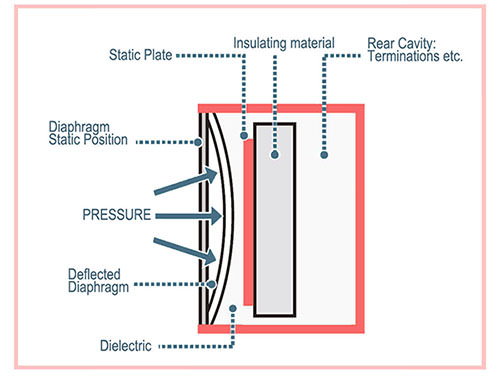
The capacitive pressure transducer relies on capacitance change produced by deflection of the membrane which alters the capacitor geometry.
Advantage of Metal Capacitive Pressure Sensor
- Proof & burst pressure is better than others
- High accuracy can be expected as 0.075%-0.1%/FS
- Minimal measurable range can be 100pa
- Low power consumption
Disadvantage of Metal Capacitive Pressure Sensor
- Max measurable range usually no more than 400bar
- Bigger size with heavier weight usually
- Relative higher production cost
- Recommended Models of Metal Capacitive: ESS343
Ceramic Capacitive Sensing
Ceramic capacitor technology makes use of a set ceramic base and a movable ceramic diaphragm structure. The movable diaphragm is sealed as well as repaired with the base with a technique such as glass slurry.
An electrode pattern is printed on the within between both to create a variable capacitor. When the medium pressure on the diaphragm changes, the capacitance in between both changes accordingly. The signal is transformed as well as conditioned by a conditioning chip and then output to a succeeding stage for usage.
Advantage of Ceramic Capacitive Pressure Sensor
- Wide pressure range: 6kpa-500bar
- High over pressure: 20X-30X, good for automotive industry
- Dry type, no oil-filled, good for Food, Medicine industry
- Better corrosion and chemical resistance.
Disadvantage of Ceramic Capacitive Pressure Sensor
- Non-linear output
- High output impedance
- Aring aging problem
- Cannot reach high capacitance levels of polarised types
Piezoresistive Pressure Sensor
The piezoresistive measuring principle manipulates the change in the sensing unit elements electric properties when it warps, the force put in on the sensing unit element as pressure is used triggers it to deform as well as in doing so alters its electrical properties, the electric signals which change along with the pressure a transmitted outward with ultra-thin bonding wires, this permits the modification in the electric signals to be Measured
In piezoresistive pressure sensors, there are 4 resistors released on diaphragm in order to measure the outcome of physical pressure applied upon them.
Any kind of perceptible modification in resistance is being converted, with a Wheatstone bridge circuit right into an output voltage.
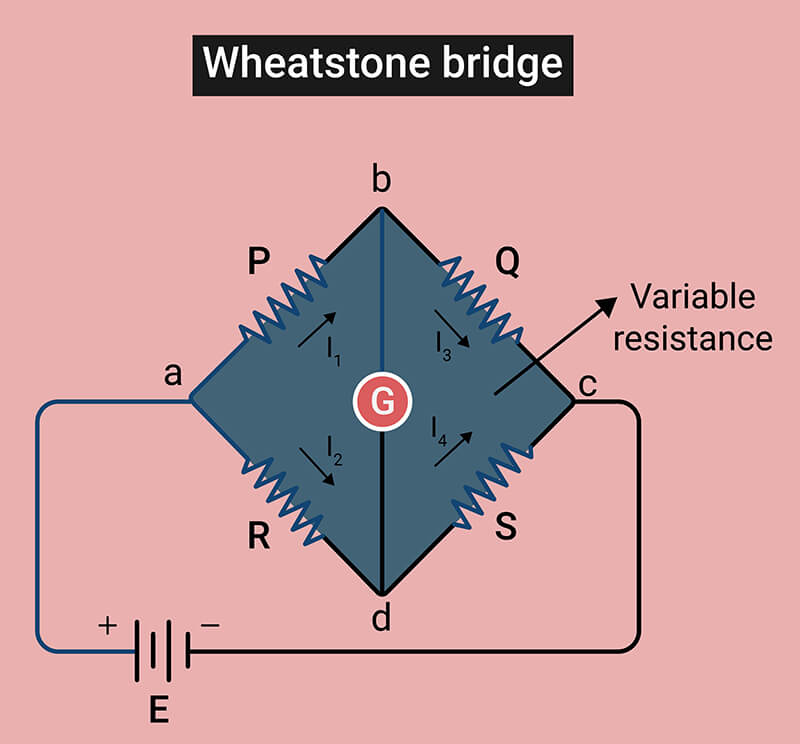
The piezoresistive pressure measurement principle is among the firstly developed in MEMS technology and it was created many years prior to the capacitive one. Because of this, it is most frequently utilized. Due to their widespread as well as reduced production cost, piezoresistive pressure sensors are widely used in customer electronics and the vehicle industry, in addition to in home appliances.
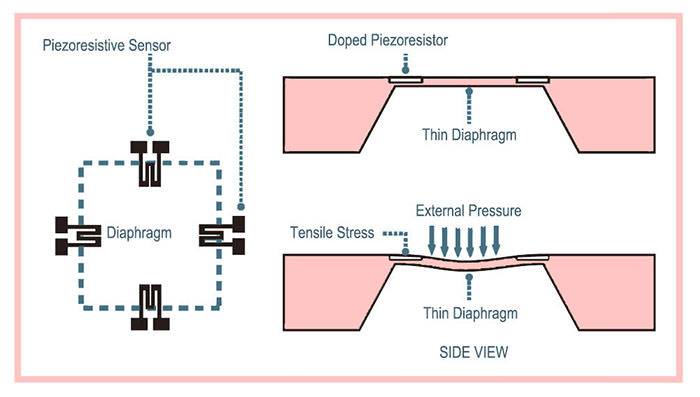
In existing globe, vary from the diaphragm and substrate material, piezoresistive pressure sensor can be acknowledged as three preferred types:
- Silicon piezoresistive types
- Metal thin-film piezoresistive (thin film) kinds
- Ceramic piezoresistive (Thick film dry type)types
Silicon piezoresistive Pressure Sensor
Silicon piezoresistive technology is understood by the piezoresistive attributes of semiconductors. The piezoresistive properties of semiconductor materials depend upon elements such as the kind of material, the doping focus, and also the crystal orientation of the crystal.
Silicon piezo-resistive pressure sensor utilizing the sensing unit elements which basically includes doped silicon (P type), it is really similar to the contemporary integrated circuit that are used in laptop computers or tablets today.
Simply put, by including thoroughly controlled amounts of pollutants (dopants) to the semiconductor (N type substrate), extra lightly doped silicon results in a greater resistivity and also a higher gauge factor. This likewise boosts the thermal sensitivity of both the resistance and also gauge factor.
Similar to a strain gauge, a piezoresistive sensing unit includes a diaphragm onto which four pairs of silicon resistors are bound.
Unlike the construction of a strain gauge sensor, here the diaphragm itself is made from silicon and the resistors are diffused right into the silicon throughout the production procedure. The diaphragm is completed by bonding the diaphragm to an unrefined wafer of silicon.
To boost the dielectric resistance of silicon piezoresistive technology, some unique product packaging procedures are utilized, oil filling is one of the most popular one.
Instead of pressure on the diaphragm to extend the cables and also change the resistance straight, people can also make use of type of medium to move the pressure and strength on the diaphragm, one of the most used mediums is silicon oil, as necessary, the pressure sensor or transmitter created with this technique are typically called Diffused Silicon Oil-Filled products.
Pressure sensors that utilize silicon piezo-resistive sensing elements offer several benefits over other pressure sensing innovations, they are tiny, lightweight, highly repeatable, secure with time, dynamically receptive and also really conscious variants in pressure.
Advantage of silicon piezoresistive pressure sensor
- Tiny dimension
It can be personalized to 45mm overall length including electric and also procedure ports, portable size will certainly conserve area and minimize weight for some special applications. - Long terms security
Silicon piezoresistive is not glued, printed or electro-plated to the surfacearea to the sensing diaphragm, so it has no bonds and therefore are very stable in comparison, 0.1% is generally assured, 0.2% is optimum for a lot of range span, - Stable and durable under most conditions
The combination of a high flexibility material and near flawlessly adhered and integrated generates a structure with really little hysteresis making certain that pressure analyses are specific regardless of the instructions of changing pressure. - High signal output sensitivity
The relative high degrees of voltage decline can be attained throughout semiconductor strain gauges for a provided pressure change which allows individuals to make better use of analogue to digital resolution and improve signal to noise - Great for both dynamic as well as static pressure measuring
Unlike piezoelectric pressure sensor that just utilized to measure dynamic pressure changing, piezoresistive and also measure both static pressure and also dynamic pressure. - Can be commonly used in lots of industries
Pressure sensor that use silicon piezoresistive sensing elements supply several advantages over various other pressure sensing innovations, it can be deposited in the majority of the modern-day sectors. - An upgraded version of semiconductor strain gauge
Solid-state diffusion makes 4 silicon resistors doping on N type substrate, creating electrical signal by resistance changing on Wheatstone bridge, no glue, bond, 100% flexible, reduced hysteresis
Disadvantage of silicon piezoresistive pressure sensor
- Temperature performance
Temperature drift which generally because of difference resistance property of 4 doped silicon resistors - Power excitation
Relative high excitation power called for, so silicon piezoresistive is not appropriate for battery powered option - Shock resistance
Even if the substrate material is n-type mono-crystalline silicon layer, that can make silicon sensing element more elastic, nonetheless in some heavy shock application such as hydraulic pressure system or water hammer circumstance, the repaid altering shock pressure can possibly over the pressure rate of silicon piezoresistive sensor diaphragm, in case of that, to prevent and also decrease the overpressure damage, thin film piezoresistive technology is - Chemical corrosion
SS316 is the most common metal utilized in silicon capsule construction, nonetheless some chemicals are very corrosive to SS316, to solve this problem, people canmake use of other material such as hastelloy, monel, inconel and titanium for rather, nevertheless such unique material constantly cost greater than stainless-steel, shall we have cost competitive method to solve chemical concern? Certain, ceramic piezoresistive sensing can do the task well.
Some of the above prospective problems that should be talked about with manufacturers before choosing silicon pressure sensors.
Recommended Designs of Silicon Piezoresistive
Metal thin film piezoresistive pressure sensor
The sensing unit elements can be bonded on to the surface area with glue like regular strain gauge type, or with the conductor like semiconductor strain gauge type, or with doping the P silicone on N stye substrate like diffused silicone type.
The sensing elements can additionally be deposited on the diaphragm by vaporized or sputtering, using that, it can eliminate possible troubles with adhesives failing at high temperatures as well as makes it easier to create little tools.
Among the means by spluttering the sensing element on a metal thin film substrate, called metal thin film (MTF) piezoresistive pressure sensor
The term “film” consists of reasonably thin metal films, having a density of regarding 100 nm to about 10 microns, thin metal films, having a density of concerning 10 nm to about 100 nm, as well as ultra-thin metal films, such as discontinuous or island type metal films having a thickness of less than about 10 nm. The term “metal” includes pure or essentially pure steels as well as metal alloys.
Advantage of Metal Thin Film pressure sensor
- Reduced gauge factor
In contrast to thick film (ceramic piezo-resistive), thin metal films havean instead low gauge factor (2 ˜4). Due to the fact that they have much smaller sized resistance and can bear a lot higher existing density than semiconductor piezoresistors, they can generate comparable signal strength to semiconductor - Much less noise and highly sensitive
The lower resistance produces much less thermal noise. Given that metal films have several orders of magnitude greater service provider density than semiconductor piezoresistors, their 1/f noise will be significant with gadgets working at the resonant frequency as well as doing ac measurements, thin metal films can be highly sensitive. - Construction flexibility
In contrast to semiconducting piezoresistors, metal thin film piezo resistors can be produced at dramatically reduced cost. Metal films of thickness from 10 nm to 10 microns can be merely evaporated or sputtered onto practically any type of substrate, such as Si, SiC, SiN, SiO2, glass, and also plastic materials. - Anti-shock and vibration
The metal thin-film sensor is extremely stable as a result of the materials. In addition, it is resistant to shock and vibration loading in addition to dynamic pressure elements. Since the materials utilized are weldable, the sensing unit can be bonded to the pressure connection − hermetically sealed with no extra sealing materials. - Ideal option for heavy-duty equipment
Because of several excellent attributes of metal thin film, such as lower gauge factor, extremely well-burst pressure security capability (thanks to the impressive ductility of the metal thin film), boosted output signal, well performance at heat, moderate manufacturing cost, it can be among the best choices when getting pressure sensor for heavy-duty industries. - Better for the clinical sector
As a result of the very secure capability (less than 0.1%/ FS) and also high precision, and good metal hygiene problem, thin-film piezoresistive sensing units likewise made use in medical facilities for numerous clinical cases such as infusion pumps, insulin pump.
Disadvantage of Metal Thin Film pressure sensor
Metal thin film has so many benefits, nonetheless, no person is best, listed below points needs to be considered
- Not ideal to measure absolute pressure
- Not suitable remedy for reduced microwave frequencies jobs
- Cost higher than the thick film pressure sensor
- Complicated fabricate procedure
Recommended Models of Metal Thin Film Piezoresistive
- EST380
- EST380S
Ceramic piezoresistive pressure sensor(Thick Film type)
The ceramic piezo-resistive pressure sensor is a dry-type thick film pressure sensor which made of ceramic Al2O3 96% by piezo-resistive technology, works following the piezoresistive principle, the Wheatstone bridge is screen printed straight on one side of the ceramic diaphragm and also the diaphragms opposite side.
The ceramic piezoresistive pressure sensor capsules are made with a ceramic base plate and also a flush diaphragm and also work following the piezoresistive principle. The Wheatstone bridge is screen printed on one side of the flush ceramic diaphragm which is, consequently, glued to the sensing unit’s body. The bridge encounters the within where a dental caries is made as well as the diaphragm’s contrary side can for that reason be exposed directly to the medium to be measured.
To conclude, ceramic piezoresistive technology makes use of a thick film printing process to print a Wheatstone bridge externally of a ceramic structure and also uses the varistor effect to convert the pressure signal of the medium right into a voltage or current signal.
Advantage of ceramic piezoresistive pressure sensor.
Ceramic piezoresistive technology has the advantages of moderate cost and also basic procedure over traditional stainless-steel solutions, based on our experience, we’ve finished up the main features of ceramic piezoresistive go as listed below.
- A lot more solid and steady.
Since ceramic piezoresistive do not count on oil, the diaphragm can be thicker, as well as the pills can be made much shorter than silicon, ceramic piezoresistive sensors do not bring the threat of a leak that might endanger an entire set of sensors. - High stability.
Due to the fact that they are tougher, ceramic pressure sensors will certainly not differ in their calibrated establishment even after multiple operating cycles, hence minimizing the danger of sensing unit drift. All these attributes make ceramic pressure sensors ideal for a lot of industrial applications, particularly if precision, vibrant range, and also corrosion resistance are critical requirements. - Chemically inert.
Ceramic is naturally high corrosion defense from acidic or alkaline remedies, the disc-designed pressure sensor elements are made from 96% pure alumina ceramic which unlike lots of metal based sensing units, is chemically inert as well as consequently untouched by many corrosive compounds. - Light weight & low profile.
As stated over, ceramic pressure sensing capsules can be much smaller-sized than others, so their weight is light accordingly, they can be easily packaged to fulfill your very own housing need, what’s more, ceramic thermal security can make its operating temperature from -40 to 105 ° C, so they can withstand high operating temperatures as well as pressures without losing the level of sensitivity at reduced pressure values. They tolerate fairly high pressures too.
Disadvantage of ceramic piezoresistive pressure sensor.
- Modest overload performance.
As a result of the less flexible nature of the ceramic itself, the standard hollow structure only bears the pressure of the diaphragm, which has bad resistance to overload. when the pressure of the medium to be measured is strained, the ceramic resistance sensing unit will certainly take the chance of the diaphragm rupture and the medium leak. - Output sensitivity.
The signal output sensitivity of this technology is reduced, the range a minimum of starts from 50kpa for the pressure sensor, as well as 100kpa for the pressure transducer is a must, as well as the upper limit range for ceramic piezoresistive, disappears than 50bar for sensor, 600bar for a pressure transducer, so if pressure range exceed that, ceramic piezoresistive will certainly be not the most effective solution;. - Temperature drift.
Typically, if adopts ceramic piezoresistive solution at heat, it will trigger noticeable temperature drift if over 120 ° C. - O-Ring aging issue.
Unlike silicon piezoresistive which the stainless steel can be welded, for a ceramic piezoresistive pressure sensor, produced with suitable O-Ring material is very important to improve sealing performance nonetheless, regardless of common NBR or Viton will certainly run the risk of the leakage issue at long run, particularly under rough problems.
Recommended Models of Ceramic Piezoresistive
Piezoelectric Pressure Sensor
Piezoelectricity is the charge produced throughout certain materials when a mechanical stress is used.
Piezoelectric pressure sensors make use of an element made from a material which creates electric power when they are under strain, such as quartz or tourmaline.
When a force is applied to a piezoelectric material, an electrical charge is generated across the faces of the crystal. This can be measured as a voltage proportional to the pressure.
Most notably, they just produce power when the pressure adjustments (The output signal will progressively drop to zero, also in the visibility of consistent pressure), and also are because of that appropriate just for dynamic pressure measurements (piezoelectric sensors are not normally ideal for determining fixed pressure).
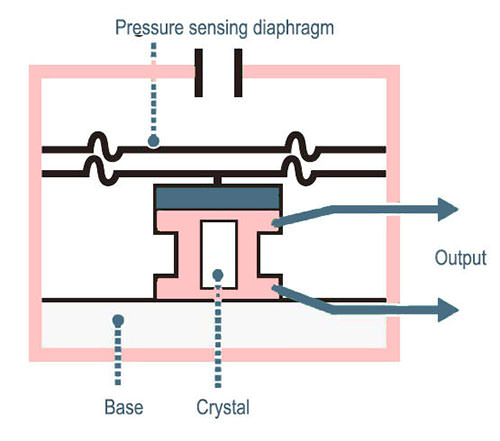
Unlike piezoresistive as well as capacitive transducers, piezoelectric sensor elements call for no external voltage or existing resource. They create an output signal directly from the applied strain.
The output from the piezoelectric element is a fee proportional to pressure. Discovering this needs a cost amplifier to transform the signal to a voltage.
Advantage of piezoelectric pressure sensor
-
- Ruggedness
The effectiveness, high frequency as well as rapid response time of piezoelectric pressure sensors mean they can be made use of in a vast array of industrial and also aerospace applications where they’ll be subjected to range of rough environments (high temperatures as well as pressures).
- Ruggedness
-
- High temperature
Aside from the connected electronics, piezoelectric sensing units can be utilized at high temperatures. Some materials will certainly operate at approximately 1,000 ºC. The sensitivity may change with temperature however this can be lessened by appropriate selection of materials.
- High temperature
-
- Reduced power consumption
The output signal is produced by the piezoelectric element itself, so they are naturally low-power devices.
- Reduced power consumption
Disadvantage of piezoelectric pressure sensor
- At risk to shock and also vibration.
- Can only measure pressure in dynamic
- Make intricacy (need to be very carefully created and also positioned as close as feasible to the sensor to decrease noise and other signal mistakes).
MEMS Pressure Sensor
It’s quite simple to think of a piezoresistive or capacitive pressure sensor as a huge device like a through-hole electronic element or a component all set to screw into the side of a storage tank– nonetheless that’s not constantly the situation.
A piezo or capacitive pressure-sensing system can additionally be produced on silicon as a MEMS (Micro Electro Mechanical System) device and also packaged as a portable surface-mount system generally gauging only about 2-3mm per side.
MEMS tools are generated in silicon utilizing doping and etching procedures. These procedures are carried out at chip range, resulting in a tiny gizmo that can be co-packaged with signal-conditioning electronics. The electronic wiring may make up easy boosting to produce an analogue output, and also might likewise consist of analogue-to-digital conversion to generate an electronic output.
Advantage of MEMS pressure sensor
- High linearity as well as security.
- Tiny dimension lightweight.
- Low power make-up.
Glass micro-fusion Pressure Sensor
Glass micro-fusing technology uses a high-temperature sintering process that incorporates a silicon strain gauge with a stainless-steel structure, it is usually appropriate for high pressure range (100Mpa and over).
Sapphire Pressure sensor
Sapphire Pressure sensor is a sort of SOS (silicon-on-sapphire) pressure measurement type, that is normally considered as one of the services to handle ultra-high temperatures, chemically inert, and abrasion immune instances.
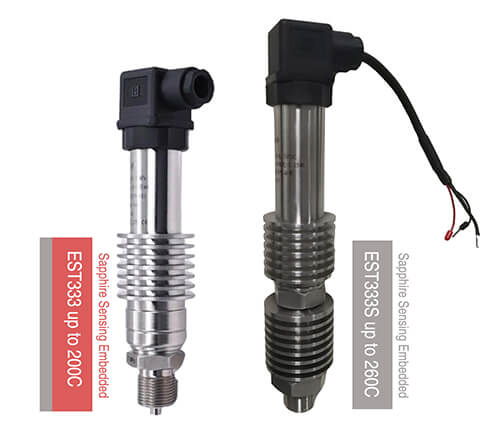
Click to download datasheet of: EST333 Sapphire High Temperature Pressure Sensor

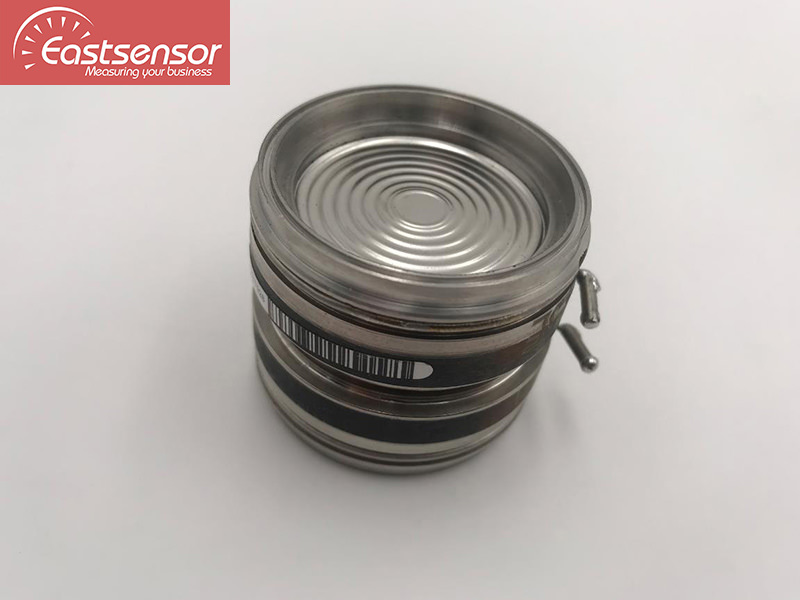
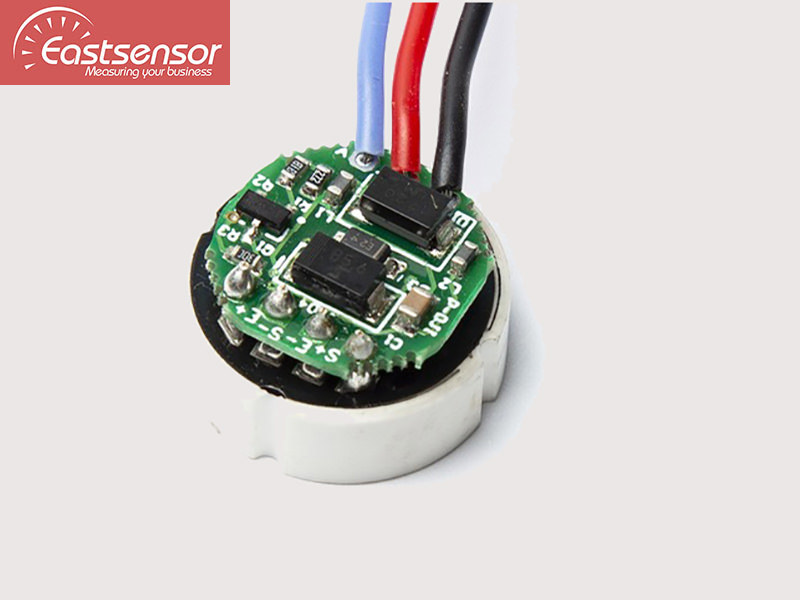
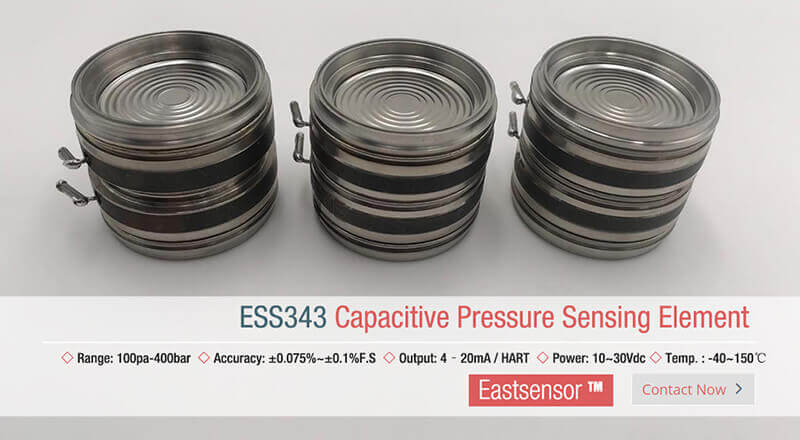
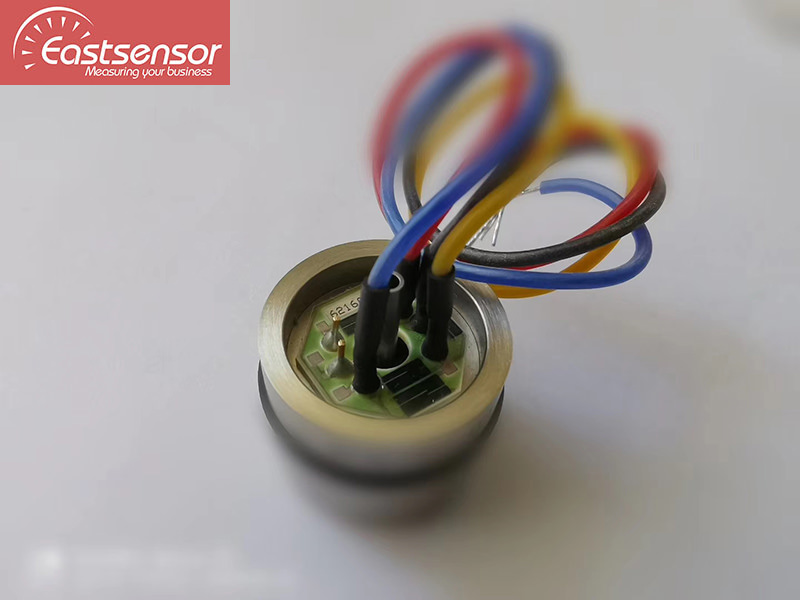
.jpg)
